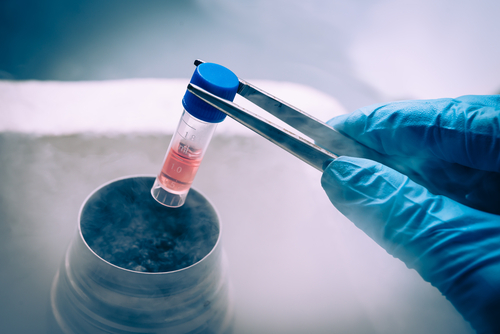LifeCell's community cord blood banking meets recommendations of Indian Academy of Paediatrics
PTI Jun 12, 2018
LifeCell in a joint statement with the Indian Academy of Paediatrics (IAP) has recommended parents to consider donating the stem cells of their children to a public bank where utilization would be 100 times more as almost all conditions require matching stem cells from a donor for treatment.

The statement promotes pooling of stem cells for not just a baby's own use but the entire member community and their families. It is a well established fact that stem cells have the potential to treat several conditions and have been in use for many decades in life saving treatments. The baby's umbilical cord blood being a rich source of these stem cells, can be collected at birth safely, causing no harm to the baby or mother, and preserved for a lifetime of use through the concept of cord blood banking.
Currently, thousands of patients struggle each year to find matching stem cells for treatment and some even succumb to the medical condition while trying to find a match. Hence, considering the potential and importance of stem cells, parents wanting to do the best for their baby choose to preserve the baby's cord blood stem cells with a private bank for future use, if required. These stem cells preserved in a private bank are meant for exclusive use by the baby or its sibling only.
However, one's own cord blood cells cannot be used to cure genetic disorders as the cord blood cells would have the same mutation. According to the American Society for Blood and Marrow Transplantation, the chance of a baby benefitting from its own cord blood is 0.04% to 0.0005%.
Hence in a consensus statement released recently, the Indian Academy of Paediatrics (IAP) has recommended to parents not to consider storing the stem cells of their children for own use in private banks. IAP rather recommends donating it to a public bank where utilization would be 100 times more as almost all conditions require matching stem cells from a donor for treatment.
Currently, it is estimated that an inventory size of 250,000 cord blood units is required to provide Indian patients a high probability of finding a well-matched stem cell unit. The current inventory in public cord blood banks is very low and insufficient. And moreover, most public banks have stopped adding further inventory due to paucity of funds.
An alternative approach is being pioneered by LifeCell, India's first and largest stem cell bank, which promotes the concept of 'Community stem cell banking', which estimates to solve the problem of finding a matching stem cell unit by 2022. LifeCell's community stem cell bank operates much similar to a public bank where parents contribute their baby's cord blood cells to a common pool for use by any unrelated patient of the member family.
In the event of medical need, the members' entire family (baby, siblings, parents, grandparents) can have unlimited and free access to matching stem cells from the pool. Most importantly, unlike a public cord blood bank, there is no need for any payment for accessing these matching stem cells from the pool - only a nominal amount to be paid towards collection, processing, testing, and preservation of stem cells at the time of birth.
Speaking on the IAP recommendation, Mayur Abhaya, MD, LifeCell said, "We are extremely glad with IAP recommendations to discourage private banking of stem cells and welcome their decision to encourage public banking. LifeCell has been the change agent in this concept introducing 'Community stem cell banking' which provides open access of cord blood stem cells preserved by our member-parents amongst themselves.
Community stem cell banking works similar to a public bank, only that the access is limited to the community. With absence or limited and insufficient inventory of cord blood stem cells in public banks in India, community stem cell banking scores over public banks as it is sustainable and is not dependent on funding from government bodies. LifeCell envisions the creation of the country's largest inventory of stem cells available for open access in order to address the dearth of stem cell resources required to treat over 70% of patients in need."
-
Exclusive Write-ups & Webinars by KOLs
-
Daily Quiz by specialty
-
Paid Market Research Surveys
-
Case discussions, News & Journals' summaries